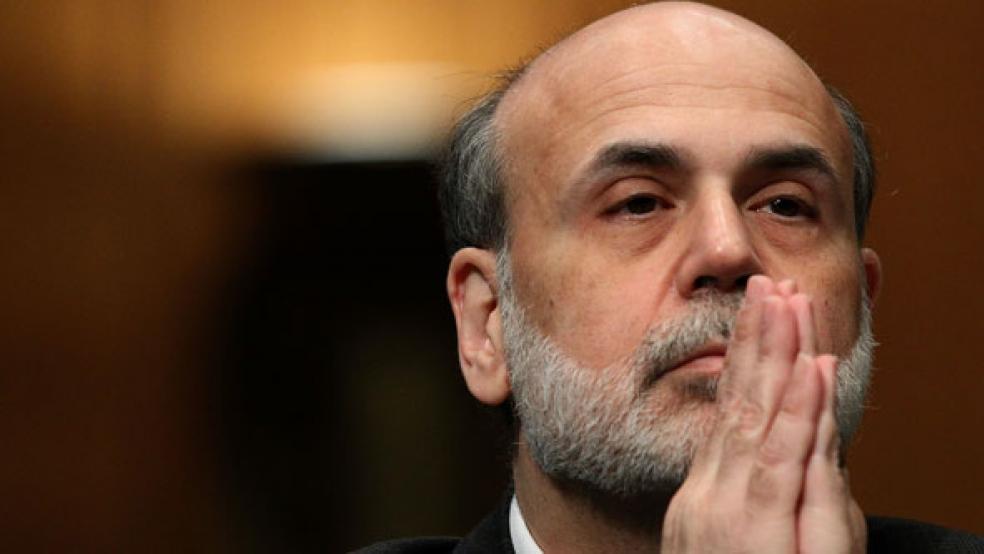The Federal Reserve stuck to its plan to buy $85 billion in bonds each month to push down borrowing costs and prop up the economy, citing risks to growth from recent budget tightening in Washington.
Describing the economy as expanding moderately in a statement that largely mirrored its March decision, Fed officials cited continued improvement in labor market conditions.
 But they reiterated that unemployment is still too high for policymakers' comfort, reinforcing their desire to keep buying assets until the outlook for jobs improves substantially. "Fiscal policy is restraining economic growth," the Fed said in its policy statement. "The Committee is prepared to increase or reduce the pace of its purchases to maintain appropriate policy accommodation."
But they reiterated that unemployment is still too high for policymakers' comfort, reinforcing their desire to keep buying assets until the outlook for jobs improves substantially. "Fiscal policy is restraining economic growth," the Fed said in its policy statement. "The Committee is prepared to increase or reduce the pace of its purchases to maintain appropriate policy accommodation." Kansas City Fed President Esther George again dissented against the Fed's support for growth, due to concerns about financial imbalances and long-term inflation expectations.
RELATED: The Coming Storm: Unsustainable Federal Disaster Costs
Until recently, analysts had expected the Fed to buy a total of $1 trillion in Treasury and mortgage-backed securities during its ongoing third round of quantitative easing, known as QE3, with the Fed starting to take its foot off the accelerator in the second half of the year. Now, things are looking a bit more shaky.
"Expectations for tapering off of the Fed's outcome-based purchases have been pushed back due to recent softening in the economic data," according to a statement from the private sector Treasury Borrowing Advisory Committee released on Wednesday.
Economic growth rebounded in the first quarter after a dismal end to 2012, but the 2.5 percent annual rate of expansion fell short of economists' estimates, and forecasters are already penciling in a weaker second quarter.
The housing market continues to show signs of strength, with home prices posting their biggest yearly gain since 2006, the year the market began a historic slide that snowballed into a global financial crisis.
However, the industrial sector is not quite as perky, with a report on Wednesday showing national factory activity barely grew in April. And the job market, the focus of much of the Fed's efforts, remains sickly. U.S. employers added only 88,000 workers to their payrolls in March and data on Wednesday suggested continued weakness in private-sector employment.
At the same time, inflation has steadily been coming down. The Fed's preferred measure of core inflation, which excludes more volatile food and energy costs, rose just 1.1 percent in the year to March. Overall inflation was up just 1 percent, the smallest gain in 3-1/2 years.
The Fed targets inflation of 2 percent.
CHECKING THE TOOLKIT
In response to a deep financial crisis and recession, the Fed cut overnight interest rates to effectively zero in late 2008. It has also bought over $2.5 trillion in assets, more than tripling its balance sheet, to keep long-term rates low.
If the economy's fortunes do not improve, the central bank may well look for fresh ways to boost its support to the economy, and increasing the amount of assets it is buying is just one option.
The Fed could announce an intent to hold the bonds it has bought until maturity instead of selling them when the time comes to tighten monetary policy. Fed Chairman Ben Bernanke has already raised this as a possibility.
Policymakers could also set a lower unemployment threshold to signal when the time might be ripe to finally raise rates. Currently, the threshold stands at 6.5 percent, provided inflation does not threaten to breach 2.5 percent.
Research suggests such "forward guidance" about the future path of interest rates can have a strong impact on current borrowing costs, and one Fed official - Narayana Kocherlakota, president of the Minneapolis Federal Reserve Bank - has already suggested lowering the threshold to give the economy a boost.
This article is by Pedro da Costa and Alister Bull of Reuters.




